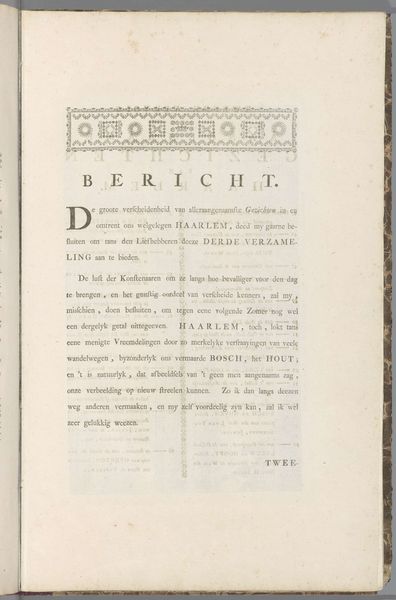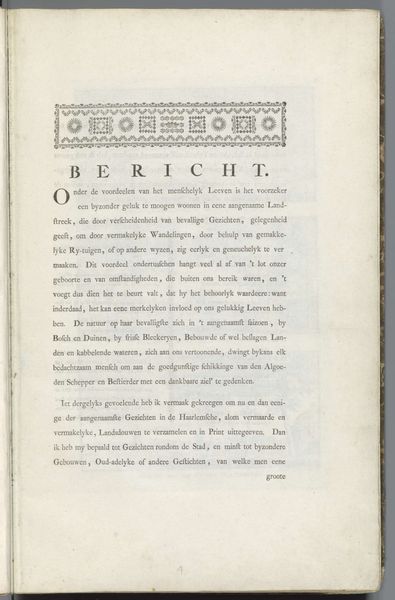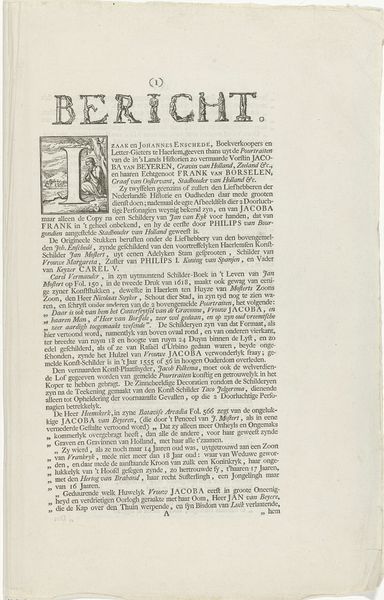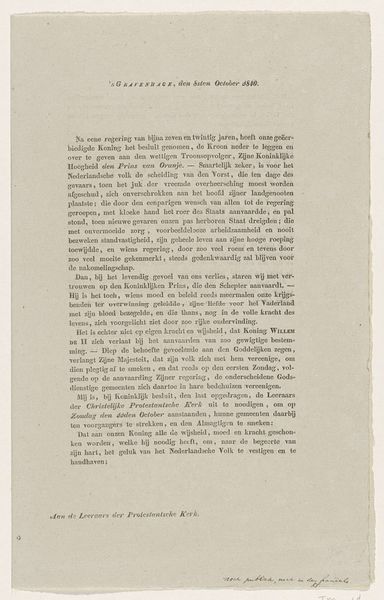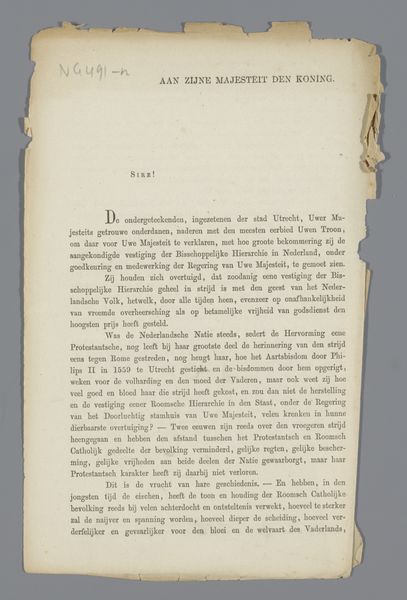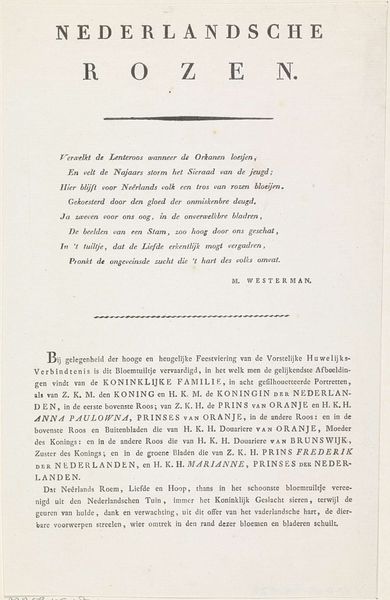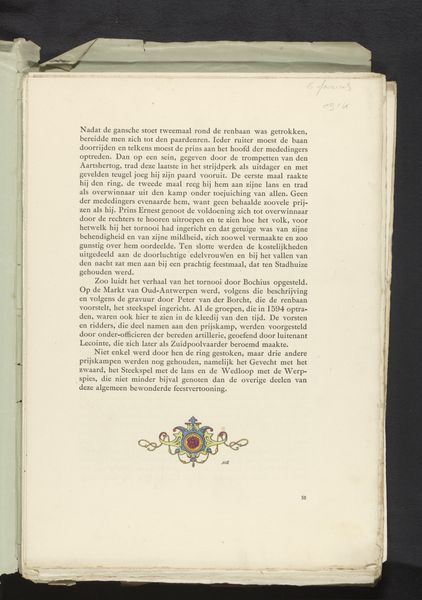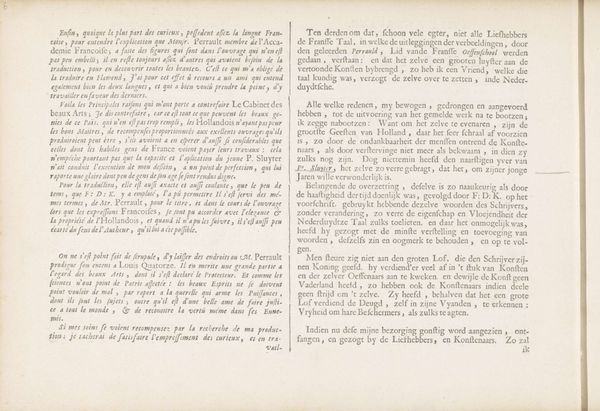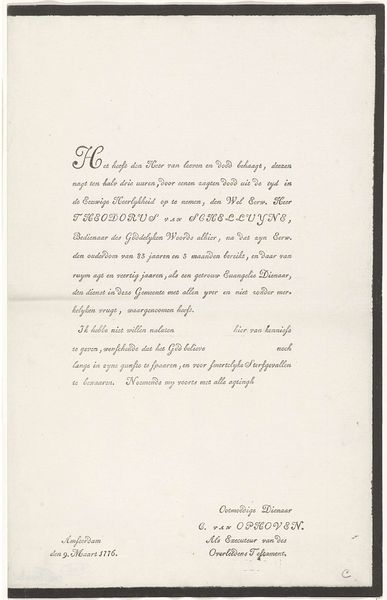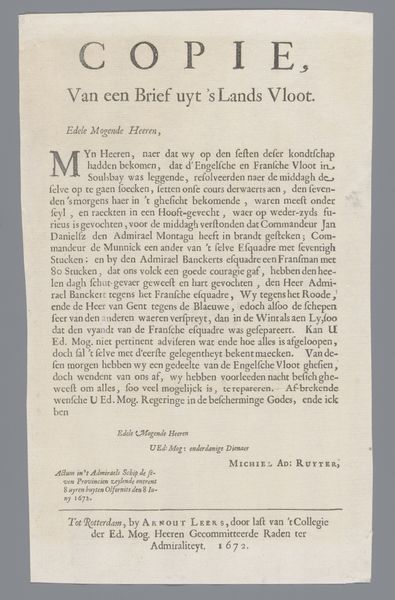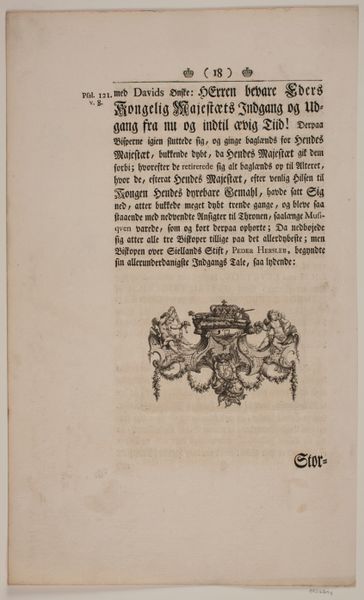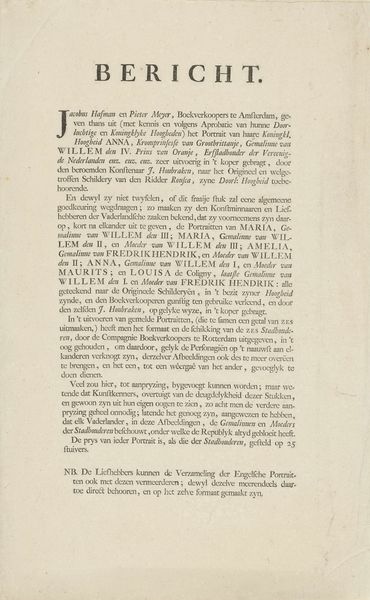
Tekstblad uit: Vervolg van aangenaame gezichten in de vermakelyke landsdouwen van Haarlem, nieuwlings naar 't leven getekend door de beroemde konstenaars H. Spilman en C.V. Noorde, 1762 1762 - 1763
0:00
0:00
januitgeverbosch
Rijksmuseum
print, etching, paper, typography, engraving
#
dutch-golden-age
# print
#
etching
#
paper
#
typography
#
engraving
Dimensions: height 425 mm, width 268 mm
Copyright: Rijks Museum: Open Domain
Editor: Here we have "Tekstblad uit: Vervolg van aangenaame gezichten in de vermakelyke landsdouwen van Haarlem, nieuwlings naar 't leven getekend door de beroemde konstenaars H. Spilman en C.V. Noorde", a text page from 1762, etched and engraved by Jan Bosch. It looks like a preface to a book, maybe? What do you see in this piece, beyond just text on a page? Curator: It’s fascinating to consider this page as more than just text. This isn't simply about the words themselves, but about the *access* to representation they promise. The text, translated, speaks to a collection of views of Haarlem and its surroundings. Editor: I see, so it's about representation and accessibility, rather than purely the aesthetic value of the text itself? Curator: Exactly. This page acts as a call to action and almost an advertisement from Jan Bosch for people who may want their homes sketched, therefore situating it within a social context. This wasn't neutral image-making, but active participation in shaping a visual narrative of the city. Consider, too, who *could* afford to commission such images? This is not an innocent landscape, but a carefully constructed portrayal, implicitly excluding certain demographics and thus making statements regarding power structures. Editor: So you're saying even something that appears straightforward like this is deeply embedded in social and economic relationships? It’s a perspective I hadn’t considered. Curator: Precisely! The image invites critical analysis, interrogating who has the agency to represent and who is being represented—or, more pointedly, *mis*represented or unrepresented— in Dutch Golden Age society. These textual details have deep roots, don't you think? Editor: It certainly reframes how I look at art of this period! I realize there’s much more going on than initially meets the eye, even with "just" text. Curator: Exactly! And the fact it's easily available in a museum allows current interrogation to influence further studies.
Comments
No comments
Be the first to comment and join the conversation on the ultimate creative platform.
